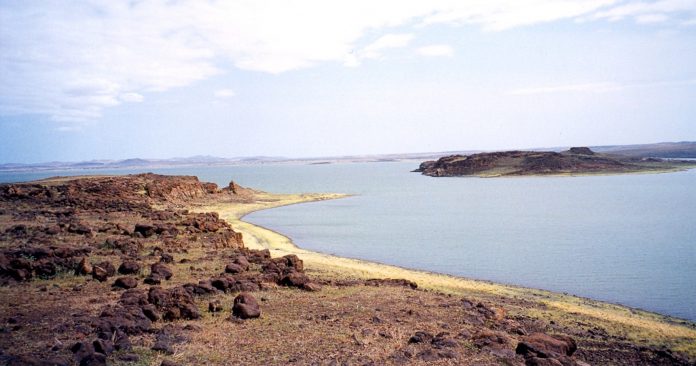The World Bank recently took a swipe at the dispirited manner in which Kenya and Ethiopia are handling the risk of Lake Turkana drying up following construction of a hydroelectric dam in Ethiopia.
Lake Turkana — the world’s largest desert lake — is at the risk of going extinct in coming years should there be no strategic interventions. This is as a result of Ethiopia constructing the Gibe III hydro-electric power dam along River Omo, from where the lake receives in excess of 80 percent of its fresh water.
Despite glaring extinction risks around the lake, which is a Unesco heritage site, both sides appear disengaged from the issue. To highlight the attendant distress, Unesco included Lake Turkana to the list of endangered world heritage sites in June 2018.
Apparently such a drastic move has not been enough to trigger the two neighbouring governments into action as a matter of urgency.
It is precisely why the World Bank has brought up the matter now lest it gets buried in the short-term as focus gets directed to other things and only to resurface later as a dry lake.
Beyond being a big source of livelihood to surrounding fishing villages, the lake plays a crucial ecological role through its regional cooling effect. It is highest time the two governments go back to the negotiating table as a matter of urgency and agree on a strategic way to prevent a looming natural disaster.
Not much progress has been made to save Lake Turkana. For instance, a joint process to develop a Turkana-Omo basin management plan initiated in 2013 between the two nations and facilitated by the United Nations Environment Programme (Unep) has stalled. The initiative and several more others have failed to show any promise of addressing negative impact on the lake.
In what complicates matters, Kenya has an agreement to buy hydropower from Ethiopia, part of which will come from the Gibe III dam. A Kenya-Ethiopia interconnector line is nearing completion that will enable cross-border power trade.
In 2012, the two Horn of Africa economies entered a pact allowing hydropower imports from Ethiopia but the deal has been in abeyance following delays in construction of the interconnector. The transmission line is the missing link.
The Kenya-Ethiopia original pact comes with the take-or-pay condition, which makes it mandatory for Kenya to buy 400MW of hydropower from Ethiopia at any given time at $0.07 per unit. Take-or-pay condition means that with or without using the power, Kenya will still pay for the availability of the power.
The clause puts Kenya at a disadvantage as the country now has surplus domestic generation capacity, a departure from 2012 when the covenant was sealed and when the country suffered supply shortfalls. Kenya has added to its energy stock more geothermal plants in the intervening period, alongside wind and solar energy, making it energy sufficient.
It is, however, understood that Kenya has recently been pushing for a review of the power purchase agreement with the aim of possibly removing the take-or-pay condition and peg power purchase purely on need basis. Also, Kenya is pursuing a deal to sell its surplus geothermal to Ethiopia, effectively turning the pact from unilateral sales to mutuality. Country officials should also pursue redemption of Lake Turkana from extinction with similar zeal. It is the same government that has identified the lake as a potential site for the region’s first nuclear power plant, which will require boatloads of water to cool reactors.
Beyond the power trade, Kenya has in the past sought reassurance that the dammed water would always be released after serving its purpose of generating electricity and not used to irrigate land. There are fears that Ethiopia may divert the trapped waters to its irrigation projects thereby cutting off water flowing downstream to the Lake Turkana basin.
Lake Turkana is a great attraction site for tourists, boasting pristine national parks — Sibilioi, Central Island and South Island national parks, all of which have been listed by Unesco as heritage sites.
If nothing changes, Omo River project may cause the lake level to reduce dramatically, leading to the region’s first environmental disaster of a large water body. Across the world, several lakes have suffered such a fate. For instance, Aral Sea in Central Asia dried up after its feeder rivers were diverted for irrigation schemes, prompting the World Bank to later intervene with a water reservoir project to resuscitate it.
As a country, we should not wait for such fallout to act. It is much easier to fix the situation early to avoid deploying resources much later. Lake Turkana is among Kenya’s strategic water towers and should be treated as one.
This article was originally published by Business Daily.



